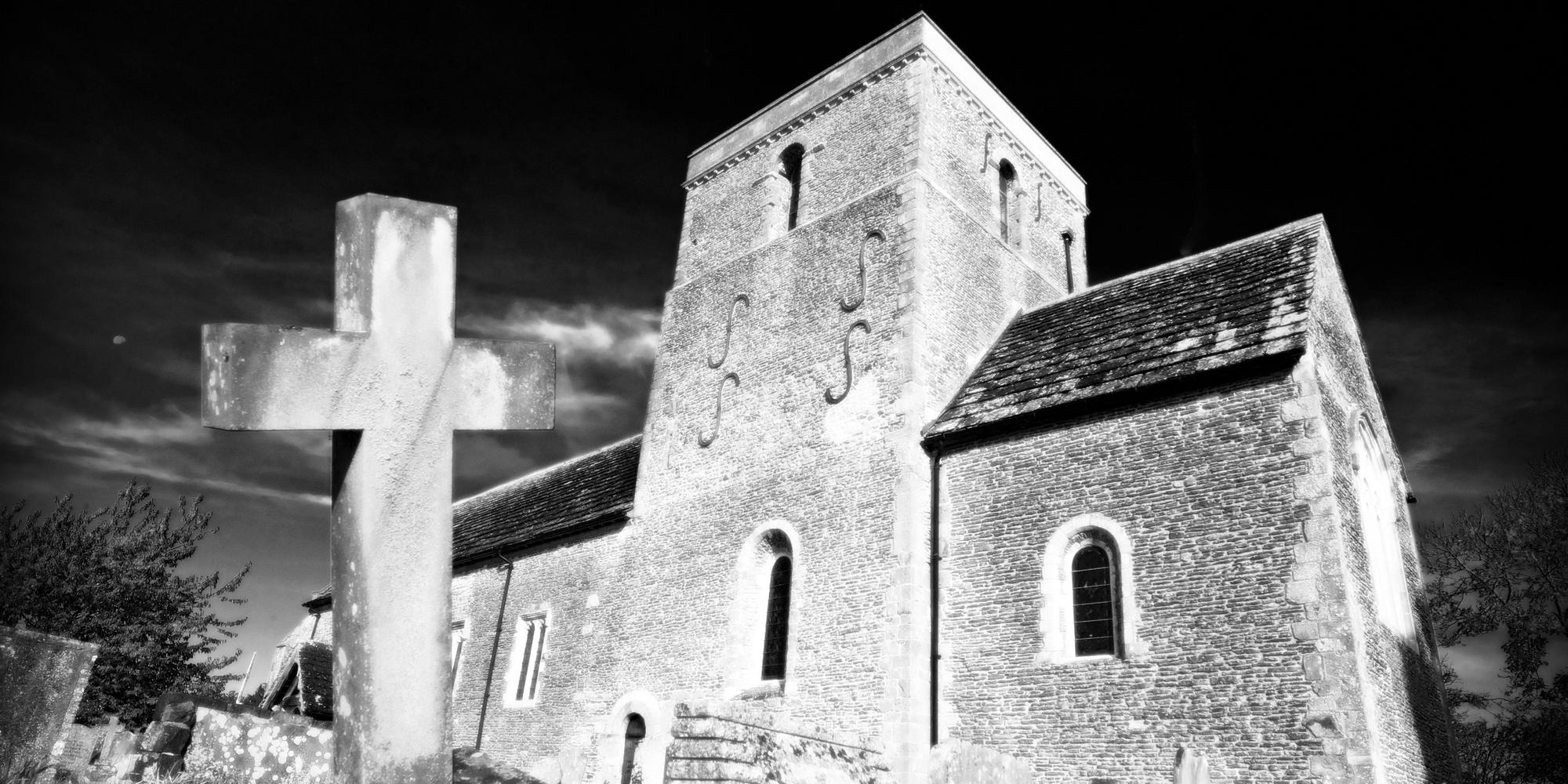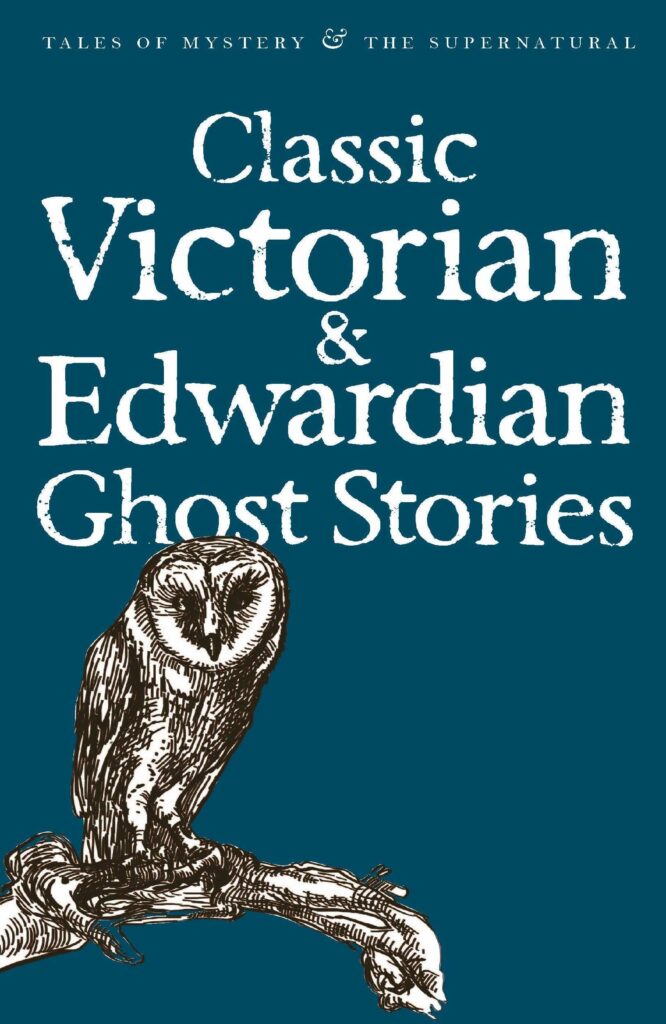
Man-Size in Marble: A Tale for Halloween
‘Whatever you do, sir, lock the door early on All Saints’ Eve, and make the blessed cross-sign over the doorstep and on the windows.’
Halloween season, in common with Christmas, is the time of year many an avid reader will reach for a ghostly tale. Whilst sitting comfortably by the fireside hopefully the story will provide just the right amount of gentle chill to the room and a soft breeze to the back of the neck. If this description appeals, ‘Man-Size in Marble’ maybe just the tale you are looking for.
This story fits the bill in a number of ways, it is set in the period leading up to Halloween, with the climax occurring on that fateful night. The tale is told by a male narrator who immediately alerts the reader that this will not be a happy tale. The opening line sets up an air of mystery: ‘Although every word of this tale is true, I do not expect people to believe it.’ He goes on to reveal: ‘There were three who took part in this; Laura and I and another man. The other man lives still, and can speak to the truth of the least credible part of my story.’ There are indeed some troubling implications established in the first paragraph, however, before exploring the story further, a little background is in order.
‘Man-Size in Marble’ was first published in Home Chimes magazine in December 1887 and came from the pen of Edith Nesbit. If that name seems familiar, it is not surprising, as she would later become famous for her highly popular novel The Railway Children (1905) and other children’s fiction including Five Children and It (1902) and The Enchanted Castle (1907). However, in addition to her successful children’s fiction, Nesbit wrote a number of chilling ghost stories for adults, in addition to poetry and other works in collaboration.
To say Edith Nesbit led a Bohemian life would be somewhat of an understatement. When she married her husband Hubert Bland, she was already seven months pregnant. During their marriage, Bland fathered two children by Nesbit’s friend Alice Hoatson, and Nesbit raised them as her own. Both Nesbit and Bland had affairs and their home in Eltham was lively place with frequent visitors, including such well known names as H.G. Wells.
Nesbit and her husband were politically active and were the co-founders of the Fabian Society, to which the roots of the Labour party can be attributed. Nesbit and Bland also wrote fiction together under the pseudonym Fabian Bland. If you look carefully, some of her socialist beliefs are apparent in her children’s fiction. Although a politically active woman writer, her attitudes towards the Women’s Suffrage Movement was at best ambivalent and at times directly opposed. Some of Nesbit’s attitudes and beliefs appear to have worked their way into her gothic stories too, along with her lifelong fascination for ghosts.
The protagonists of the tale are newly weds of slender means. Our narrator is an artist and his wife Laura a writer. They are unable to afford to live in London and so look for a cottage in the country which they hope will be “both sanitary and picturesque.” Despite their youthful idealism and inexperience, they find such a place in Kent (note the Nesbit/Bland household was in Eltham, Kent) and the reader is provided with an idyllic description of the house and garden. Our narrator reveals he ‘was never tired of sketching the view and the wonderful cloud effects from the open lattice, and Laura would sit at the table and write verses about them.’ They even manage to find an ‘old peasant woman’ with a penchant for local legends to take on all of the domestic duties as ‘Laura hated housekeeping.’ This all seems harmless enough, although there is just the tiniest bit of implicit criticism of their idealism embedded here which becomes more apparent as you read on. They may be ‘as happy as the summer was glorious’ but in any good gothic tale the reader knows such happiness cannot last.
Sure enough, our narrator returns home one October evening to find Laura ‘a crumpled heap of pale muslin, weeping on the window seat.’ The source of her misery is their housekeeper Mrs Dorman announcing she needs to leave them before the end of the month. Laura’s language and level of distress at such news is somewhat melodramatic, even by late Victorian standards as she tearfully bemoans the fact that they will have to take on the domestic chores themselves and she will have no time for writing. One might think, as a woman writer herself, Nesbit may have provided a more sympathetic portrayal, yet her characterization of Laura is an ambivalent one. There are some subtle barbs against Laura’s fear of physical work, coupled with the fact that the narrator finds her laughing at her own written jokes. Nesbit may be employing some subtle humour here to position and critique the protagonists as products of an over refined gentry who were afraid of hard work. Possibly, Nesbit is also offering a satire of the emerging figure of the New Woman in late Victorian society. Writer Sarah Grand employed the term ‘new woman’ to identify women who were become more independent and sought radical change regarding their own rights, a movement of which Nesbit was highly critical.
However, ‘Man-Size in Marble’ is far more than a vehicle for Nesbit to put forward her ideals. It has, at its core, all the ingredients for a chilling gothic tale. It soon becomes clear that there is something sinister behind Mrs Dorman’s need to leave before the end of October. Despite the narrator’s best efforts to persuade her, she insistently repeats she must leave before the last day of the month. He soon realizes she is concealing something. After much encouragement she obliquely refers to the history of the house in Catholic times, and certain deeds which were done in the past. We learn the ‘nature of the ‘deeds’ might be vaguely inferred from the inflection of Mrs Dorman’s voice, which was enough to make one’s blood run cold.’
Eventually, it becomes clear Mrs Dorman is too fearful to remain in the house and with further encouragement she reveals why. The source of her fear concerns their house, a local legend, and, of course, Halloween. Yet, our narrator is a man of logic and so he pays little attention to her dire warnings, and does not relay the tale to Laura because he feels it would upset her, but also feels there is ‘some more occult reason’ which begs the reader to ask what this could be.
Thus, the story has all the classic ingredients of a ghostly tale – a local legend pertaining to their house, a fearful peasant woman issuing warnings which are ignored, and a ‘large and lonely’ deserted Norman Church nearby. All this and Halloween.
Yet, there is some curious complexity to this little tale. It is sometimes difficult to position our narrator. He clearly adores his wife although at times is a little patronizing and makes light of her fears of being left alone when he wants to step outside to smoke his pipe. He tells her ‘Pussy, you’re over tired. The housework has been too much for you.’ Is he foolish and arrogant for ignoring Mrs Dorman’s warnings, or is he an example of a rational late Victorian man who may enjoy listening to a bit of local folklore, but is far too logical to believe in the existence of the supernatural? Indeed, he sets out to disprove the legend. Such conflicting beliefs were part of the 1880s, a post Darwinian age when interest in Spiritualism and seances was on the increase. Nevertheless, the portents of doom are there and gather momentum as the reader progresses through the story. Mark Gatiss positions ‘Man-Size in Marble’ as one of the most terrifying stories he has ever read. It can be found in Classic Victorian and Edwardian Ghost Stories along with many other suitable offerings for Halloween. Read on if you dare…
Denise Hanrahan-Wells
For more information on the life and works of Edith Nesbit, visit the website of The Edith Nesbit Society
